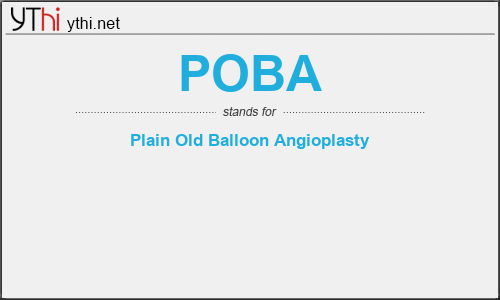What does POBA mean? What is the full form of POBA?
The Full Form of POBA is Plain Old Balloon Angioplasty.
Between January 2009 and December 2012, consecutive SF cases treated with either drug-eluting stent (DES) or plain old balloon angioplasty (POBA) were retrospectively enrolled in this study. The study endpoints were all-cause death, cardiac death, myocardial infarction (MI), target vessel revascularization (TVR), target lesion revascularization (TLR), ST, re-stent fracture (re-SF), and major adverse cardiac events (MACE) defined as the composite of cardiac death, MI, and TLR.
Of 135 SF cases, 67 (49.6%) cases were treated with DES, whereas 68 (50.4%) cases with POBA. Median follow-up period was 1,401 (IQR: 967-1,771) days. The estimated MACE rate at 3 years was significantly lower in the DES group as compared with the POBA group largely driven by less TLR (25.7 vs. 55.8%, P < 0.001). Moreover, 1-year landmark analysis after PCI for SF revealed that MACE continued to occur even after 1 year irrespective of the treatment option (P = 0.47). On multivariable Cox regression analysis, POBA and large post-procedure angle (Δ) defined as the degree difference between the end systolic and diastolic angle were identified as independent predictors for TLR.
POBA
means
Plain Old Balloon Angioplasty![]()
Translate Plain Old Balloon Angioplasty to other language.


Leave a Reply
You must be logged in to post a comment.